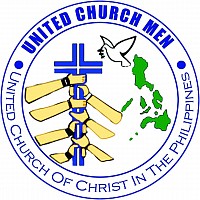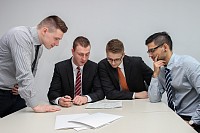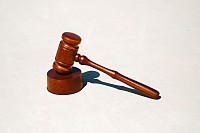HOW TO CONDUCT MEETINGS
The Roberts Rules of Order is a guide for conducting effective and organized meetings. It consists of several key principles:
1. Meeting Agenda: The chairperson should prepare and distribute an agenda before the meeting, outlining the topics to be discussed.
2. Meeting Procedure: The chairperson begins the meeting by calling it to order and follows a structured order of business. Participants must wait to be recognized by the chair before speaking.
3. Quorum: A minimum number of members must be present (quorum) to conduct official business. This requirement ensures that decisions are made with the involvement of a sufficient number of participants.
4. Motions and Voting: During the meeting, members can make motions to propose actions or decisions. For a motion to be considered, it must be seconded by another member. Participants then debate the motion, and the chair calls for a vote. Most decisions are made by a majority vote, but some may require a two-thirds majority.
5. Amendments: Members can propose amendments to motions, altering their content or scope. The amendment must be seconded, debated, and voted upon before being added to the original motion.
6. Points of Order: If someone believes that the rules are being violated or if something improper is happening during the meeting, they can raise a "point of order" to highlight the issue. The chair then decides whether the point is valid and takes appropriate action.
7. Debate and Speaking Order: Participants should address the chair to speak, avoid personal attacks, and speak on-topic. The chair has the responsibility to maintain order during discussions, ensuring that everyone has a chance to speak and that debates are respectful and productive.
8. Minutes: A designated secretary records the meeting minutes, documenting decisions, actions, and any important discussions. The minutes are distributed to participants after the meeting.
Overall, the Roberts Rules of Order aim to promote fairness, efficiency, and democratic decision-making during meetings, providing a framework for productive discussions and effective decision-making. 🛑
PRESIDING OFFICER IN A MEETING
The PRESIDING OFFICER in a meeting plays a crucial role in ensuring that the meeting runs smoothly and efficiently. Their main responsibilities, as outlined in Robert's Rules of Order, include:
1. Maintaining order: The presiding officer is responsible for maintaining order and discipline during the meeting. They have the authority to enforce the rules and ensure that participants adhere to proper decorum.
2. Setting the agenda: The presiding officer, in consultation with other key individuals or committees, is responsible for setting the agenda for the meeting. They determine the topics to be discussed and the order in which they will be addressed.
3. Facilitating discussion: The presiding officer ensures that all participants have a fair opportunity to contribute to the discussion. They can recognize speakers, moderate debates, and manage time limits to ensure everyone has a chance to express their views.
4. Ruling on points of order: If any participant raises a point of order or questions the correctness of a procedure, the presiding officer is responsible for making a ruling. They decide whether the point is well taken and whether any violations have occurred.
5. Summarizing discussion and decisions: Throughout the meeting, the presiding officer should summarize discussions and decisions made to maintain clarity and provide a summary of what has been accomplished.
6. Enforcing rules: The presiding officer ensures that the meeting follows the established rules, such as time limits for speakers, adherence to the agenda, and appropriate voting procedures. They have the authority to enforce these rules and make decisions when necessary.
7. Voting: The presiding officer typically has the authority to vote on matters being discussed, but they usually only exercise this right in specific circumstances, such as to break a tie.
8. Concluding the meeting: The presiding officer officially adjourns the meeting once all the items on the agenda have been addressed or the set time limit has been reached. They ensure that any decisions made are clearly recorded and any follow-up actions are assigned appropriately.
Overall, the presiding officer acts as the leader of the meeting, ensuring that the proceedings are conducted in an orderly and efficient manner, and that all participants have a fair chance to express their opinions.🛑



